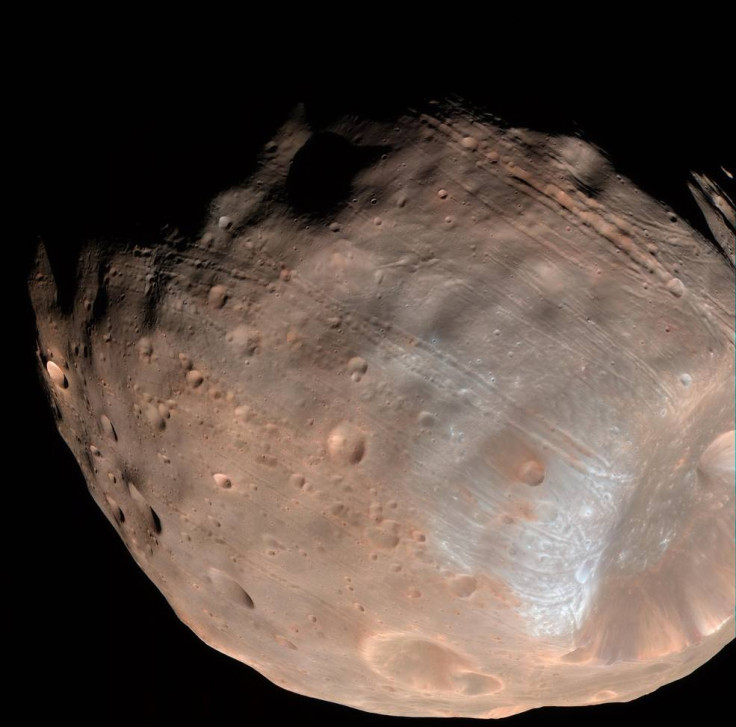Mysterious craters on Martian moon Phobos caused by re-impact of ejected material
After a primary impact on the Moon, ejected material stays in orbit and can land again on its surface.

The Martian moon Phobos is riddled with strange chains of craters and linear grooves, which scientists say were created from material ejected during impacts on the natural satellite. After spending some time in orbit, such material would have fallen back on the moon, creating the uneven landscape.
Phobos lies in close orbit to Mars, and because of this, it is affected by tidal influences which creates grooves and striations on its surface.
However, scientists were intrigued by a number of unusual chains of craters which were also visible on the moon. They did do not align with any interpretation of tidally predicted stress features, suggesting that another mechanism was at play, shaping the physical features of Phobos.
In their study published in Nature Communications, the scientists hypothesised that the peculiar chains of crater identified on the Martian moon are a novel kind of structure known as "sesquinary catenae", potentially caused by an unusual kind of impact.
Different forms of satellite impact
In the paper, the researchers, from the University of California at Santa Cruz, explain that there are different types of satellite impacts. A primary impact is by a foreign body from outside the planet's sphere of influence. A secondary impact is by a fragment ejected from a primary crater.
A sesquinary impact is an entirely different phenomenon – it is formed by crater ejecta that escapes the gravity of the satellite, but remains in orbit in the system. It then re-impacts the moon at low-velocity after an extended period of time.

The study is based on the modelling of the trajectory of ejecta material generated from a primary impact strike on Phobos, and these models suggest that the unusual craters on Phobos were possibly created by sesquinary impacts.
As this process was repeated over a long period of time, chains of craters began emerging. The scientists say that the sesquinary catenae is almost as frequent as gravity-regime crater formation linked to tidal stress.
The findings are also interesting because they provide another way of looking into the geological history of the satellites in our Solar System, and a new understanding of how they developed their specific geometrical and morphological features.
"This study also has potential implications for other closely bound satellite systems, especially Pluto and Charon, whose tidal locking and close proximity leads to the possibility of similar short-timescale re-accretions", the scientists conclude.
© Copyright IBTimes 2024. All rights reserved.






